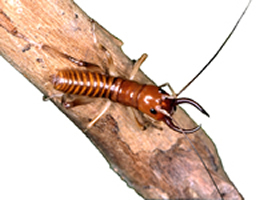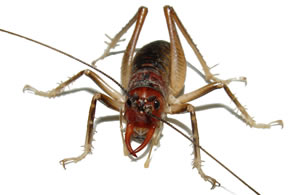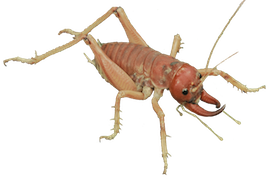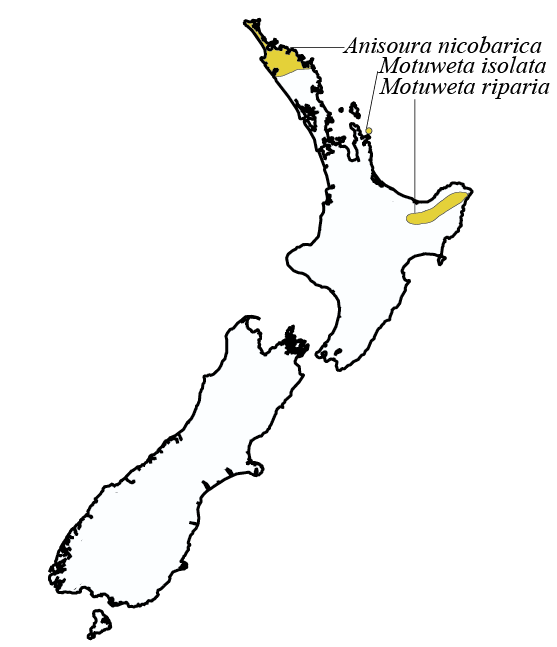|
Tusked wētā are distinctive because of the adult males having long curved "tusks" projecting forward from their jaws. The tusks are used to push an opponent; they are not used for biting. Tusked wētā are mainly carnivorous, eating worms and insects. There are three species: the (smallest) Northland tusked wētā Anisoura nicobarica; the (biggest) Middle Island tusked wētā Motuweta isolata; and (middle sized) Raukumara tusked wētā, Motuweta riparia. Northland tusked wētā live in tree holes similar to tree weta. The Middle Island tusked wētā, also called the Mercury Island tusked wētā after the islands on which it lives, was discovered in 1970. It is a ground-dwelling wētā, covering its shallow burrows with leaves. The Middle Island wētā is the most endangered wētā species and a Department of Conservation breeding programme is establishing new colonies on other islands of the Mercury Island group. The Raukumara wētā was discovered in 1996, in ranges between Bay of Plenty and East Cape. Raukumara tusk wētā live close to streams where they make burrows under stones. Because they live on the ground, young Raukumara tusk wētā can be mistaken for ground wētā, but tusk wētā have "ears" and ground wētā do not.
 |
 |
 |
Northland tusk wētā
Anisoura nicobarica male |
Raukumara tusk wētā-
Motuweta riparia male |
Mercury Island tusk wētā
Motuweta isolata male ©DoC |
| Distribution |
 |
|
|






